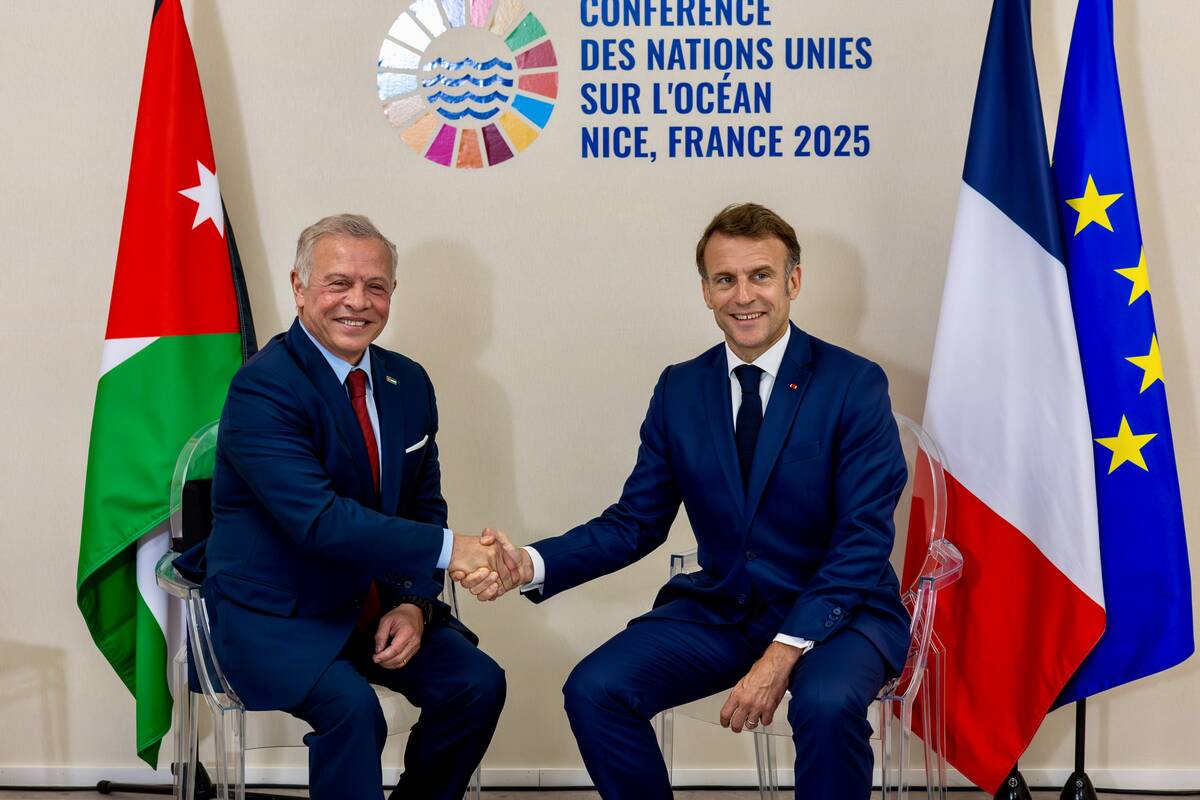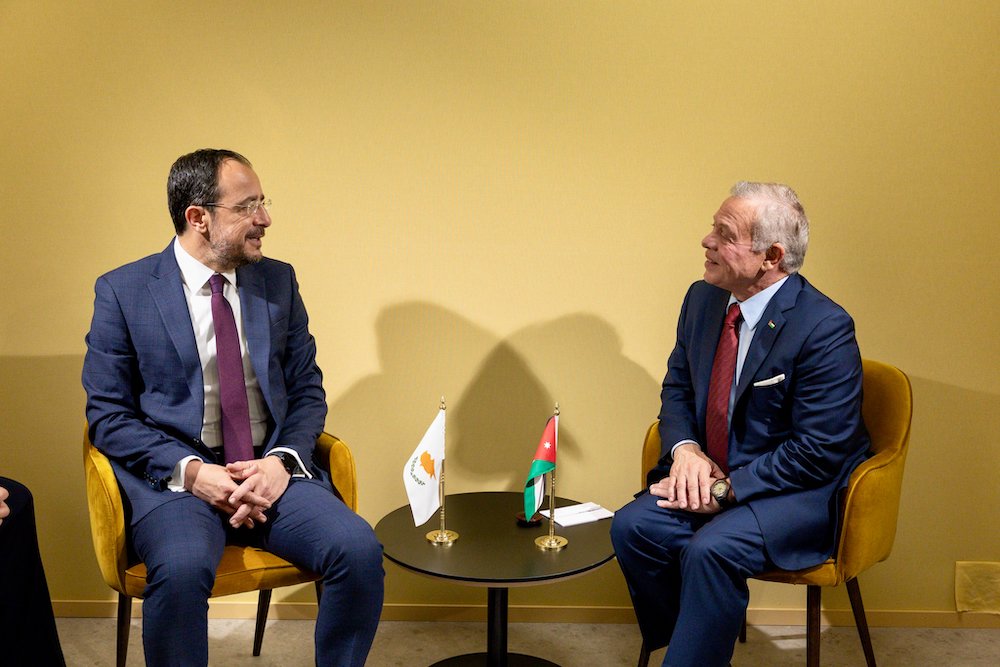LONDON: Syria’s slow return to the Arab fold is set to pick up pace. After Arab states cautiously reengaged following Bashar Assad’s fall in December, plans by the US and EU to lift sanctions have turned hesitation into opportunity.
As these barriers begin to ease, old allies are moving to renew ties — not only reviving diplomatic channels but also launching a high-stakes race to shape Syria’s postwar recovery and revival.
Leading the charge is Saudi Arabia, which has positioned itself as the key broker of Syria’s regional reintegration. Riyadh has hosted members of Syria’s new leadership and convened high-level meetings to coordinate Arab and international support for reconstruction.
A turning point came on May 14, when Saudi Arabia hosted a landmark meeting between US President Donald Trump and Syrian President Ahmad Al-Sharaa — the first such encounter between American and Syrian leaders in more than 25 years.
The meeting, facilitated by Saudi Crown Prince Mohammed bin Salman, took place just one day after Trump’s surprise announcement that Washington would lift all sanctions on Syria.
“This shift in US policy came after President Trump and Secretary Marco Rubio became convinced that Syria could spiral back into chaos and civil war — something regional allies did not want — if economic conditions remained frozen and sanctions continued to block governance,” Sameer Sabounji, policy officer and director of legal affairs at the Syrian American Council, told Arab News.
That decision has triggered a wave of normalization efforts across the region. With Saudi Arabia taking the lead, Arab states are ramping up economic, diplomatic and security cooperation, signaling a new phase in efforts to stabilize and rebuild the war-torn country.
“Arab states are invested in Syria’s recovery,” said Sabounji. “Which is why I think they helped ‘warm’ the Trump administration to Al-Sharaa and gave the US the confidence to be bold in Syria.”
Signs of this momentum also emerged on May 20, when Jordan and Syria signed an agreement to form a Higher Coordination Council, highlighting deepening bilateral ties. Talks focused on expanding energy cooperation and linking electric grids to support Syria’s reconstruction and transition.
The effort is multilayered. In April, Saudi Arabia announced plans to pay off Syria’s $15 million World Bank debt — a move intended to unlock international reconstruction grants and further integrate Syria into the region’s economic framework.
According to Sabounji, regional powers have strong incentives to push for sanctions relief. “Arab countries and Turkiye stand to gain immensely from Syria’s reconstruction, but sanctions were deterring serious investment,” he said.
He added that stronger regional trade routes and cross-border pipeline projects — connecting Gulf Cooperation Council countries to Iraq, Turkiye, the Mediterranean and even Azerbaijan — could boost regional economies, promote self-sufficiency and incentivize greater cooperation from Israel.
Echoing that view, Ghassan Ibrahim, founder of the Global Arab Network, likened sanctions relief to “the fall of the Berlin Wall” for Syrians.
“These restrictions were the wall separating Syria from the rest of the world,” he told Arab News. “Now, Syrians feel more open and optimistic — there’s a growing sense that Syria is a land of opportunity.”
This optimism is not only economic but also geopolitical. Ibrahim Al-Assil, a senior fellow at the Middle East Institute, highlighted Syria’s pivotal geography in broader regional ambitions.
“It’s because of the location of Syria and the potential of Syria in the region, and in the regional aspiration of the Saudis and the economic prosperity that Syria could contribute to this — Syria is at a very sensitive spot on the map,” he told CNN last month.
“Stabilizing Syria could help stabilize the Middle East.”
Al-Assil argued that a revitalized Syrian economy would directly benefit neighboring countries like Lebanon, Jordan, and Turkiye by enabling refugee returns and unlocking cross-border development.
“Any improvement in the Syrian economy would be felt directly in Lebanon, would be felt directly in Jordan, and that would also open the doors for the Syrian refugees to go back to their countries, similar for Turkiye, also,” he said. “Syria connects Turkiye and Europe to Arabia, and the rest of the Middle East.”
Beyond economic considerations, security remains a critical concern. Syria’s location at the crossroads of Asia, Europe and Africa has long made it a key player in regional dynamics. But that same geography has also facilitated the spread of captagon, a powerful amphetamine that has flooded Gulf markets.
Syria’s southern border with Jordan — particularly the Nassib crossing — has become a key route for drug smuggling. Gulf states, especially Saudi Arabia, consider the captagon trade a serious threat to social stability and security. Allegations that the Assad regime used the drug trade as leverage to regain regional acceptance have only added urgency to normalization efforts.
“The Assad regime flooded the region with drugs like captagon, sparking addiction crises in the region, and causing chaos and instability, driving displacement, which added strain to the region,” said Sabounji.
A more stable Syria would help curb drug smuggling and reduce the flow of illegal weapons. “It would also help curb or even prevent a resurgence of Daesh,” said Sabounji. “The interim Syrian government’s efforts to disrupt and apprehend smuggling networks also helps promote border security and reduces the illegal flow of weapons.”
Though territorially defeated in 2019, Daesh remains active in Syria, with about 2,500 fighters operating primarily in the east and northeast. Persistent instability and a diminished foreign military presence have allowed the organization to regroup, especially in areas near the Euphrates River and major cities like Damascus.
FAST FACTS
• Syria was suspended from the Arab League in 2011 over Assad’s violent crackdown on anti-government protests.
• It was readmitted in May 2023, signaling a regional push for normalization despite persistent challenges.
• The isolated Assad regime relied on support from Russia and Iran to defy sanctions throughout the civil war.
Addressing this threat requires coordinated counterterrorism and stronger governance — something regional actors now see as achievable through reintegration rather than isolation.
Sabounji also highlighted another strategic dimension: countering Iranian influence. “Re-welcoming Syria into the Arab fold would counterbalance Iran’s position and influence in the region,” he said.
Ibrahim of the Global Arab Network agreed, suggesting that many regional powers view sanctions relief as a way to shift Syria away from reliance on Iran and, to a lesser extent, Russia — toward more moderate Arab and global partnerships.
“One of the key impacts of lifting sanctions is improved security — both inside Syria and across the region,” he said. “It’s also likely to influence the government’s behavior, encouraging it to choose more constructive partners.
“When Syria was under heavy sanctions, it had limited options and would engage with anyone willing to offer support. But now, with sanctions being lifted quickly, the government is being pushed to align itself with more moderate actors.”
Iran’s regional role has long been a point of contention. Its support for proxy groups like Hezbollah and the Houthis, pursuit of nuclear capabilities, and efforts to undermine state institutions through militias have alarmed both Arab and Western policymakers.
“Arab countries welcome the chance to build a more stable and prosperous Syria,” said Sabounji. “They think Al-Sharaa can accomplish that. He needs help, though, and sanctions relief is a prerequisite.”
He added that regional actors are exhausted by conflict and are eager for a future focused on growth and stability. “This is a bold and refreshing Middle East foreign policy,” said Sabounji. “The Trump administration is signaling that regional problems need regional solutions.”
That shift reflects a departure from traditional US interventionism. “Instead of dictating policy, the US listened to what Arab countries and Turkiye were saying to it. They want to stabilize Syria and want the US to lift sanctions to enable them to do that.”
And then there is the possibility of doing business. “I’m sure President Trump also did not want US companies to be held back by sanctions and not be able to compete for lucrative deals in Syria’s reconstruction,” said Sabounji.
The new policy recalibrates US-Arab relations and sends a message. “Israel is no longer the only voice Washington listens to in the region,” he said.
“The administration is clearly pushing for harmony in the region, but it is also not waiting on Israel anymore. It has decided to strike ahead with improving or cultivating closer relations with each country, such as Saudi Arabia, Syria and Iran, even if dialogue or normalization with Israel stalls.”
Syria’s path back to the fold began with a long exile. In November 2011, the Arab League suspended Syria in response to the Assad regime’s violent crackdown on anti-government protests.
Still, Syria remained central to Arab diplomacy. Over time, countries like the UAE and Saudi Arabia shifted their approach, seeking to curb Iranian and Turkish sway.
These evolving dynamics paved the way for Syria’s return to the Arab League in 2023, after 12 years of isolation, despite lingering concerns about the Assad regime’s conduct.
Following Assad’s ouster in December 2024, Saudi Arabia quickly emerged as the lead Arab player in Syria’s reentry. In January 2025, Riyadh hosted Syria’s new foreign minister, Asaad Al-Shaibani, marking the first high-level meeting since the leadership change.
That same month, Saudi Foreign Minister Prince Faisal bin Farhan visited Damascus, highlighting support for Syria’s recovery. Then, in February, Al-Sharaa made his first official foreign trip to the Kingdom, where he met Crown Prince Mohammed bin Salman to discuss deepening diplomatic and economic ties.
Other Gulf states have since followed suit, pledging support for Syria’s reconstruction. The international community is watching closely to see how the new government treats minorities and maintains stability.
After more than a decade of turmoil, Syria’s return to the Arab world may finally be within reach. But its success hinges on the careful balancing of regional interests, global engagement and a genuine commitment to rebuilding a fractured nation.





























